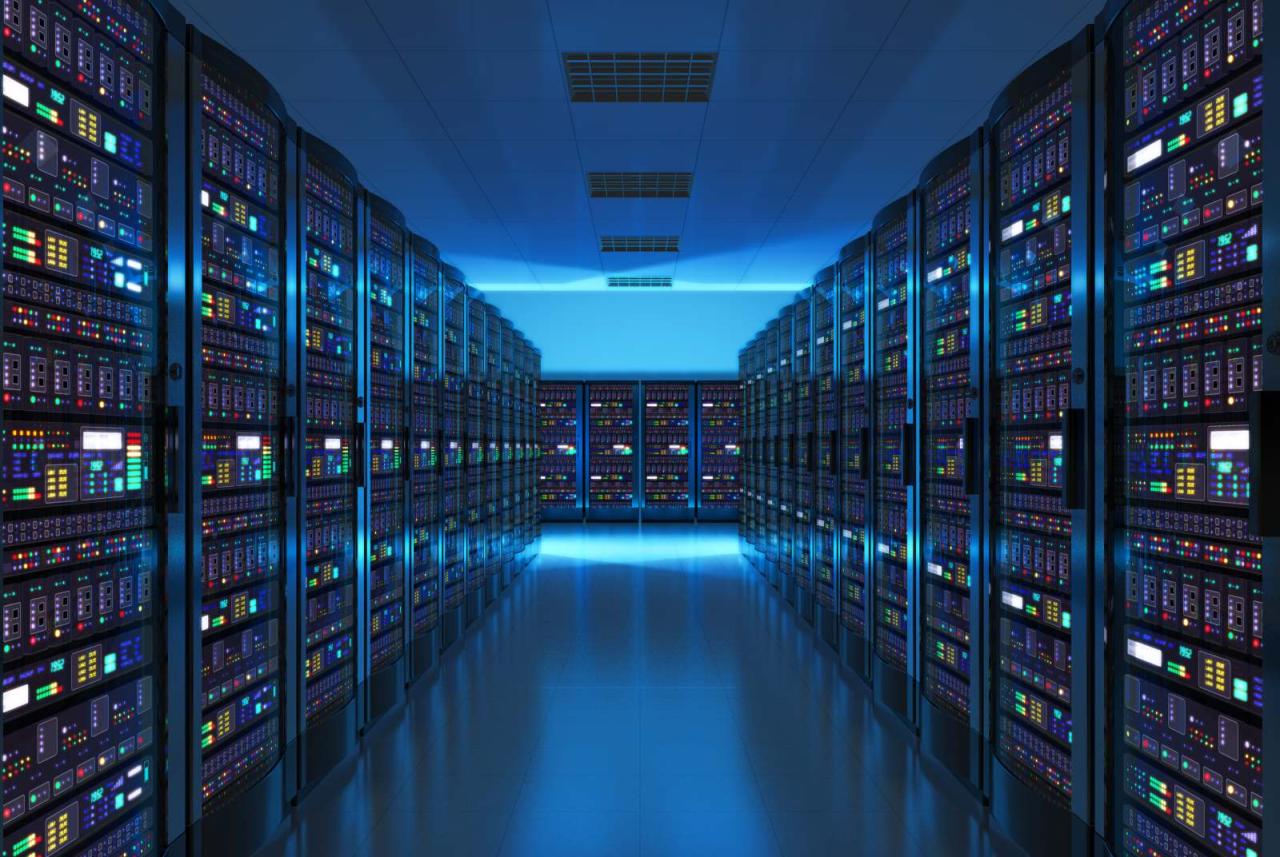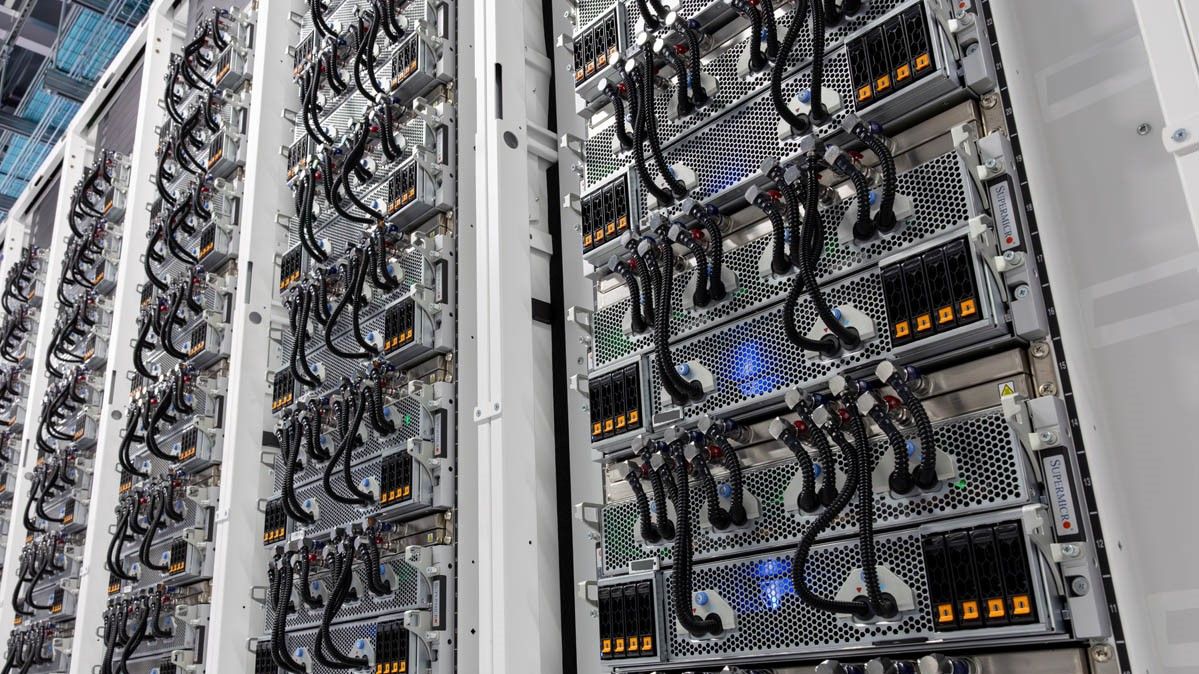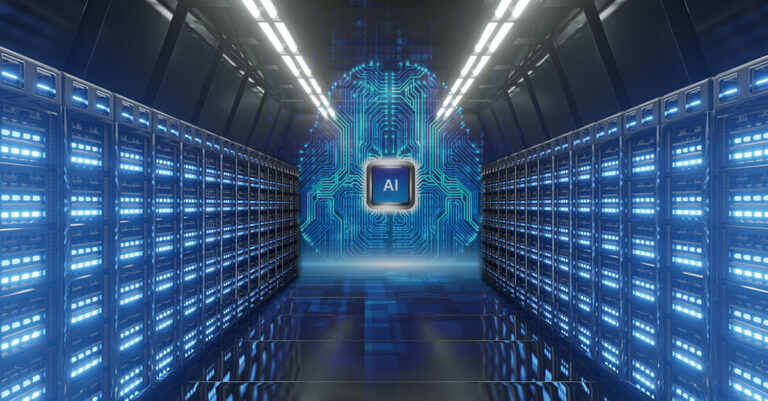The era of artificial intelligence (AI) isn’t just a technological trend; it’s a monumental shift reshaping industries, economies, and societies worldwide. At the very core of this revolution lies an often-unseen but critically vital component: servers. The exponential growth and increasing sophistication of AI applications are directly and profoundly impacting the global server market, with AI driving unprecedented server demand. This insatiable appetite for computational power is accelerating innovation in server design, pushing the boundaries of hardware capabilities, and fundamentally redefining the future of digital infrastructure. Understanding this symbiotic relationship between AI and server technology is crucial for anyone navigating the evolving landscape of modern computing.
Why Servers Are Its Lifeblood

Artificial intelligence, in its various forms – from machine learning and deep learning to natural language processing and computer vision – requires immense computational resources. Unlike traditional software that executes predefined rules, AI models learn from vast datasets, a process known as training. This training involves billions or even trillions of calculations, iterations, and parameter adjustments, demanding staggering amounts of processing power, memory, and high-speed data transfer. Once trained, these models then need to be deployed to perform “inference” (making predictions or decisions), which also requires specialized server capabilities, especially when done at scale and in real-time.
Without the continuous evolution and deployment of highly optimized servers, the ambitious promises of AI would remain largely theoretical. Servers are the literal engines that give AI its intelligence, enabling everything from personalized recommendations and autonomous vehicles to groundbreaking scientific discoveries and complex financial modeling. The current surge in AI development, particularly in generative AI and large language models (LLMs), has created an unprecedented demand for specialized server infrastructure, making it a pivotal force in the server market’s trajectory.
The Technical Demands of AI
The unique requirements of AI workloads are fundamentally reshaping server design, driving innovation far beyond general-purpose computing.
A. Specialized Processors and Accelerators:
Traditional CPUs (Central Processing Units) are excellent for general-purpose tasks but often struggle with the highly parallel, matrix-multiplication-heavy computations central to AI. This has led to the dominance of specialized accelerators:
- Graphics Processing Units (GPUs):
- AI Training Workhorses: GPUs have thousands of smaller cores designed for parallel processing, making them exceptionally well-suited for the linear algebra operations inherent in neural network training. NVIDIA, in particular, has become a dominant force with its A100 and H100 series GPUs, which integrate specialized Tensor Cores for even greater AI efficiency.
- Memory Bandwidth: AI models require rapid access to massive datasets. GPUs are equipped with high-bandwidth memory (HBM) that can transfer data much faster than traditional DDR memory, preventing bottlenecks.
- Application-Specific Integrated Circuits (ASICs):
- Purpose-Built Efficiency: ASICs are custom-designed chips optimized for a very specific task, offering unparalleled efficiency for those operations. Google’s Tensor Processing Units (TPUs) are a prime example, engineered specifically for their TensorFlow AI framework. They excel in large-scale training and inference within cloud environments due to their high performance per watt.
- Emerging Players: Other companies are also developing their own AI ASICs for specific applications, ranging from edge AI devices to data center solutions, focusing on maximum efficiency for particular AI models or inference tasks.
- Data Processing Units (DPUs):
- Offloading Infrastructure: DPUs (also known as SmartNICs) are programmable processors that offload infrastructure tasks (networking, storage, security, virtualization) from the main CPUs. This frees up CPU cycles for AI workloads, significantly improving overall server efficiency and throughput, especially in highly virtualized or cloud environments.
B. High-Bandwidth Interconnects:
AI workloads involve massive data movement within and between servers. Eliminating bottlenecks in data transfer is crucial for performance.
- PCIe Gen5 and Beyond: The Peripheral Component Interconnect Express (PCIe) standard is the primary interface for connecting components within a server. The transition to PCIe Gen5 (and future Gen6) significantly increases bandwidth, allowing GPUs, NVMe SSDs, and other accelerators to communicate with the CPU at lightning speed.
- Specialized Inter-GPU/Inter-Server Links (e.g., NVLink, InfiniBand):
- NVLink: Developed by NVIDIA, NVLink provides a very high-speed, direct, point-to-point connection between GPUs. This allows multiple GPUs within a server or across multiple servers to share data at extremely high bandwidths, effectively creating a single, powerful computational unit for massive AI model training.
- InfiniBand: A high-performance network fabric widely used to connect entire clusters of AI servers. It offers extremely low latency and high throughput, essential for coordinating thousands of GPUs or AI accelerators working in parallel on a single AI training job.
- Optical Interconnects (Photonics):
- Future of Data Transfer: Replacing electrical signals with optical signals for data transmission within and between chips and servers promises orders of magnitude higher bandwidth and lower power consumption. Photonics could revolutionize how massive AI clusters are built, enabling unprecedented scale.
C. Massive and Fast Memory:
AI models are growing exponentially in size (billions to trillions of parameters), requiring vast amounts of high-speed memory.
- High-Bandwidth Memory (HBM): Instead of traditional DDR memory modules, HBM stacks multiple memory dies vertically, integrating them much closer to the processing unit. This drastically reduces the distance data travels, leading to significantly higher bandwidth and lower power consumption. HBM is critical for AI models that require rapid access to large models and their associated data.
- Large RAM Capacities: Servers designed for AI training often feature hundreds of gigabytes, or even terabytes, of RAM to hold large datasets and intermediate computational results.
- Fast Storage (NVMe SSDs): High-performance NVMe Solid State Drives (SSDs) are essential for quickly loading and storing massive datasets used in AI training and for rapid retrieval during inference.
D. Extreme Power and Cooling Demands:
The immense computational power of AI servers generates substantial heat and consumes vast amounts of energy.
- High-Density Power Delivery: Servers need robust power delivery systems to provide stable and efficient power to multiple power-hungry GPUs and accelerators.
- Liquid Cooling Systems: As air cooling reaches its limits, liquid cooling (both direct-to-chip and immersion cooling) is becoming standard for high-density AI server racks. Liquid has a far greater thermal conductivity than air, allowing for more efficient heat dissipation, enabling higher component densities and sustaining optimal operating temperatures.
- Rack-Scale Cooling: Moving beyond individual server cooling, integrated rack-level or row-level cooling solutions are becoming common to manage heat more effectively and efficiently across dense AI server deployments.
The AI-Driven Surge in Server Demand
The impact of AI on the global server market is profound and multifaceted.
A. Hyperscale Cloud Providers as Primary Drivers:
- Massive Procurement: Leading cloud service providers (CSPs) like Amazon Web Services (AWS), Microsoft Azure, and Google Cloud are the largest purchasers of AI-optimized servers. They are building colossal data centers specifically designed for AI workloads.
- Custom Hardware Development: Many hyperscalers are investing heavily in designing their own custom AI chips (like Google’s TPUs or Amazon’s Trainium/Inferentia) and server architectures to gain competitive advantages in performance and cost.
- GPU-as-a-Service: The cloud model allows a broader range of businesses to access powerful AI servers on demand, democratizing AI development and fueling continuous demand.
B. Enterprise AI Adoption:
- On-Premises AI Infrastructure: Large enterprises (e.g., in finance, healthcare, manufacturing) are investing in their own on-premises AI server infrastructure for sensitive data, regulatory compliance, or specific performance needs.
- Hybrid AI Cloud: Many enterprises are adopting hybrid cloud strategies, leveraging public cloud AI services for large-scale training while performing inference or sensitive data processing on internal AI servers.
C. Edge AI and IoT:
- Decentralized Intelligence: As AI moves beyond centralized data centers, there’s a growing demand for compact, energy-efficient AI servers and accelerators at the “edge” of the network (e.g., smart factories, autonomous vehicles, smart cities).
- Real-Time Inference: Edge AI requires servers capable of low-latency inference, often with specialized, low-power AI chips designed for specific tasks.
D. Specialized Server Vendors Flourish:
- Niche Market Growth: Companies specializing in AI servers (e.g., NVIDIA’s DGX systems, Supermicro’s AI/HPC solutions) are experiencing significant growth as demand for purpose-built AI hardware surges.
- Component Ecosystem Expansion: The demand for AI servers drives innovation and production within the broader ecosystem of component manufacturers (chipmakers, memory providers, cooling solution vendors).
The Economic and Strategic Implications
The AI-driven server demand has significant economic and strategic ramifications.
A. Shifting Investment Priorities:
- CapEx Allocation: Organizations are redirecting significant capital expenditure towards acquiring and deploying AI-optimized server infrastructure.
- R&D Focus: Server manufacturers and chipmakers are heavily investing in research and development to create next-generation AI-specific hardware.
B. Competitive Landscape Reshaped:
- New Market Leaders: Companies that excel in AI server and accelerator technology (like NVIDIA) are gaining significant market influence.
- Vertical Integration: Cloud providers’ move to custom silicon creates a more vertically integrated market, challenging traditional server vendor models.
C. Sustainability Concerns Intensify:
- Energy Footprint: The immense power consumption of AI servers exacerbates the environmental impact of data centers, putting pressure on the industry to develop even more sustainable cooling, power delivery, and renewable energy solutions.
- PUE and Green Initiatives: The drive for lower PUE (Power Usage Effectiveness) and carbon-neutral data centers becomes even more critical with the proliferation of energy-hungry AI servers.
D. Supply Chain Pressures:
- Component Shortages: The high demand for specialized AI chips (especially GPUs) can lead to supply shortages, impacting server production and delivery times.
- Geopolitical Importance: The strategic importance of AI server technology intensifies geopolitical competition and concerns over supply chain security.
What’s Next for AI and Servers?

The evolution driven by AI demand is far from over. Several key trends will shape the next generation of AI servers.
A. Greater Heterogeneous Integration:
- Chiplets and Advanced Packaging: Future AI servers will increasingly feature processors built from smaller “chiplets” (e.g., CPU chiplets, GPU chiplets, AI accelerator chiplets) interconnected by ultra-high-bandwidth interfaces. This allows for greater flexibility, higher yields, and the integration of diverse specialized functionalities into a single package.
- System-on-Package (SoP) and System-in-Package (SiP): These advanced packaging techniques will integrate various components (processors, memory, optical transceivers) even more tightly within the same package, minimizing latency and maximizing data throughput.
B. Photonic Interconnects Become Mainstream:
- Light-Speed Data Transfer: Replacing electrical signals with optical signals for data transmission within chips and servers will offer vastly higher bandwidth and lower power consumption, becoming critical for the extremely dense and data-hungry AI superclusters.
- Co-Packaged Optics: Integrating optical transceivers directly into the same package as the processing units will further reduce power and latency, enabling truly disaggregated and composable AI server architectures.
C. Diverse AI Accelerators:
- Emergence of Diverse ASICs: We’ll see a proliferation of purpose-built ASICs tailored for specific AI tasks (e.g., generative AI inference, specialized vision processing) that offer even greater efficiency than general-purpose GPUs for those particular workloads.
- Neuromorphic Computing: While still nascent, brain-inspired neuromorphic chips could offer ultra-low power consumption for certain AI tasks, particularly inference at the edge, revolutionizing energy efficiency.
D. Enhanced Software-Hardware Co-Design:
- Full-Stack Optimization: Cloud providers and AI platform developers will continue to deeply integrate their software (AI frameworks, schedulers, orchestration layers) with the underlying hardware, leading to highly optimized, purpose-built AI systems.
- AI for AI Servers (AIOps): AI itself will be increasingly used to manage and optimize the AI server infrastructure – predicting failures, optimizing power consumption, and intelligently scheduling AI workloads across vast server fleets.
E. Sustainability as a Paramount Design Goal:
- Net-Zero Data Centers: The pressure to achieve carbon-neutral or even carbon-negative data centers will drive innovation in server design that inherently minimizes power consumption and maximizes heat reuse.
- Sustainable Supply Chains: Greater scrutiny on the environmental impact and ethical sourcing of materials throughout the entire server supply chain, from raw materials to manufacturing.
F. Quantum Computing’s Long-Term Influence:
- Hybrid AI-Quantum: While still a long-term vision, quantum computers could eventually be integrated into the AI workflow for solving highly specific, computationally intractable problems (e.g., in quantum chemistry for drug discovery, complex optimization). This would create a new demand for hybrid AI-quantum server architectures.
Challenges on the AI-Driven Server Path
Despite the incredible momentum, several significant challenges lie ahead.
A. Power and Cooling Constraints:
The relentless increase in server power density poses ongoing challenges for data center cooling and power delivery infrastructure.
B. Supply Chain Volatility:
The reliance on a few key manufacturers for advanced AI chips and components makes the supply chain vulnerable to geopolitical tensions and unforeseen disruptions.
C. Cost of Innovation:
The research, development, and manufacturing of cutting-edge AI server hardware are extremely expensive, limiting access to a few major players.
D. Talent Gap:
There is a severe shortage of skilled professionals with expertise in designing, deploying, and managing complex AI server infrastructure, including AI/ML engineers, hardware architects, and data center specialists.
E. Software-Hardware Complexity:
Ensuring seamless integration and optimal performance between rapidly evolving AI software frameworks and highly specialized hardware requires immense engineering effort.
F. Standardization:
The proliferation of custom AI chips and proprietary interconnects can lead to fragmentation in the AI server market, potentially hindering broader adoption if common standards don’t emerge.
Conclusion
The profound influence of AI driving server demand is undeniable, fundamentally transforming the computing landscape. This symbiotic relationship between artificial intelligence and server technology is pushing the boundaries of what’s computationally possible, leading to unprecedented innovations in processor design, high-bandwidth interconnects, and extreme efficiency. From the massive hyperscale cloud deployments to the burgeoning edge AI market, the demand for powerful, specialized, and sustainable servers will continue to define the trajectory of the technology industry. While challenges remain, the relentless pursuit of more intelligent and efficient server infrastructure is not just a technological race; it’s a critical enabler for the intelligent future we are rapidly building, one powerful server at a time.



